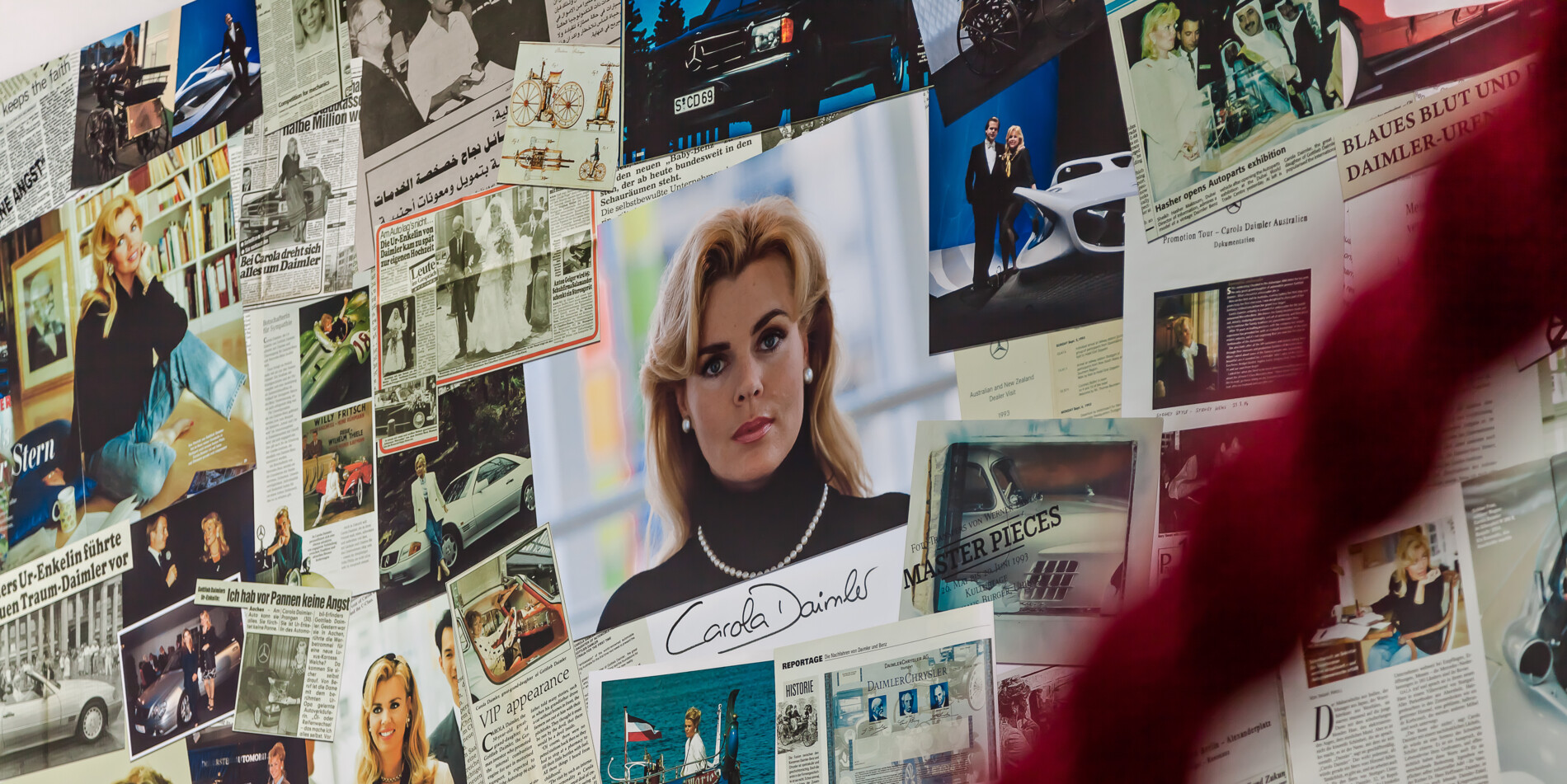ABOUT US
“Carola Daimler Cars” is a company owned by the great-granddaughter of inventor and visionary Gottlieb Daimler.
True to the motto “The best or nothing,” we have made it our mission to continue and further develop the automotive tradition and his pioneer spirit.
Thus, we were able to create a space in Stuttgart-Plieningen for fans of classic automobiles. We purchase, broker, trade and sell classical cars, modern classics, and collectors’ items with potential and history.
We are proud to be known as reliable and fair partner with a focus on originality and perfection. Trust, transparency, and the passion for the craft are what distinguish and characterize us.
We complement the retail trade with our event location, automotive events - such as our own “Carola Daimler Classics” rally – as well as other events and services that have an affinity towards the automotive culture.

HISTORy
Gottlieb Daimler once revolutionized the world as a visionary and inventor.
To this day, he is considered a pioneer and trailblazer for mobility - a role that cannot be denied.
Gottlieb Wilhelm Daimler was born in 1834. His father runs a bakery and a wine bar in Schorndorf, east of Stuttgart. At first, Gottlieb Daimler learned the craft of a gunsmith. After working in a mechanical engineering factory in Alsace for four years, he began to study mechanical engineering in Stuttgart, after which he went to England for two years.
After his return, he worked as a design engineer in Geislingen for a short time, then moved to Reutlingen, where he met Wilhelm Maybach. This ingenious autodidact would accompany Daimler to every subsequent stage of his career. First, they went to “Gasmotorenfabrik Köln Deutz Aktiengesellschaft.” There, the two design engineers became part of the company's development staff in 1872.
Nikolaus Otto, who won the first prize with his Otto engine at the Paris World Exhibition in 1867, also worked for Deutz. This engine burns gasoline and is much lighter and easier to handle than the gas engine used until then, which weighed around 500 kilograms.
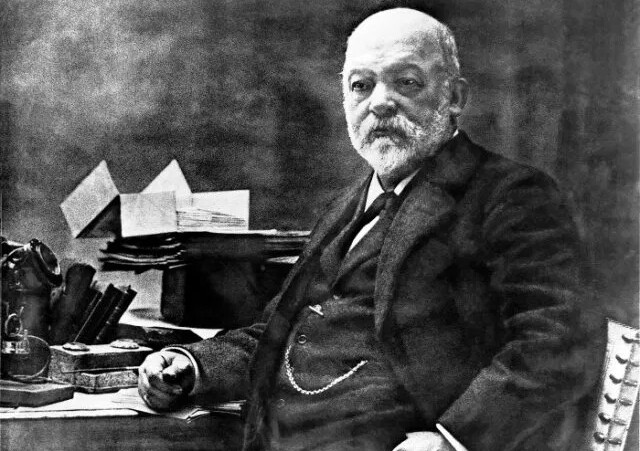
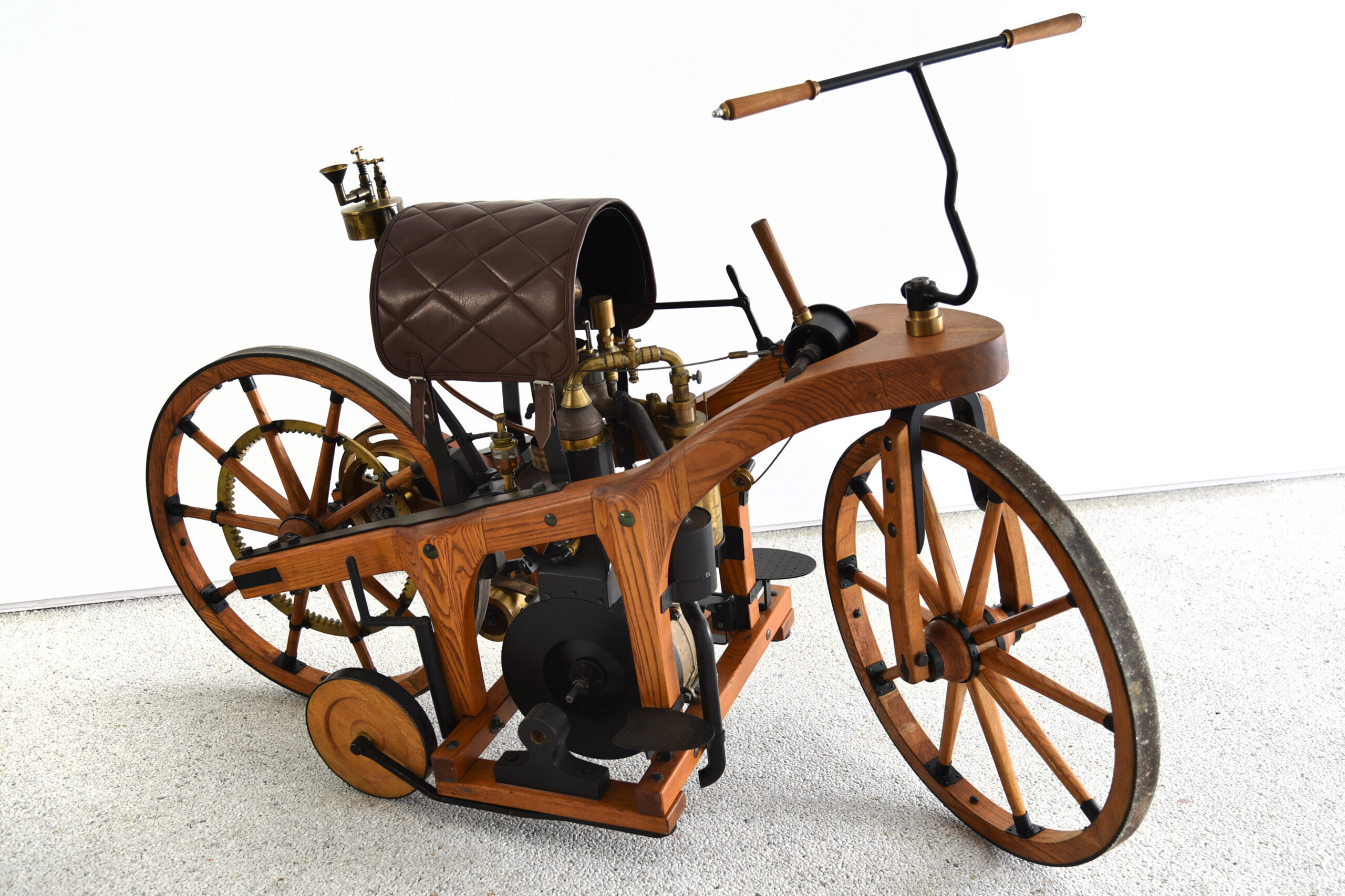
With Daimler’s help, the Otto-engine was made ready for series production. However, disputes soon arose with Nikolaus Otto. Daimler was defeated in a power struggle by the renowned designer and was dismissed from the Deutz gas engine factory. Nevertheless, he left as a rich man, because the value of the company’s shares had risen sharply in value under his leadership. He was now able to build up his own company.
Together with Maybach, Daimler went to Cannstatt, where they set up an elaborate experimental workshop in 1882. There, the two inventors researched small, high-speed gasoline engines together with mechanics. On April 3rd, 1885, Daimler was granted the patent for the so-called “grandfather clock.”
In 1885, they installed this engine into the two-wheeled so-called “Reitwagen”. By doing so, they not only created the first vehicle ever to be equipped with a gasoline engine, they unknowingly built the first motorcycle in the world. Next, they used the gasoline engine as a drive in a boat – unintentionally inventing the world’s first motor boat (name: “Neckar”).
On March 8th, 1886, Gottlieb Daimler ordered a carriage in the “Americaine” version from the wagon construction company Wilhelm Wimpff & Sohn in Stuttgart, allegedly for the forthcoming birthday of his wife Emma. In reality, however, he wanted to equip it with the grandfather clock as a further experimental vehicle.
Compared to the engine in the “Reitwagen”, Daimler and Maybach had doubled the engines displacement, increasing the output accordingly to 1.1 hp. In 1887, the cooling in the motor carriage was converted from air to water. For this purpose, a large-area finned radiator was installed under the rear seat.
Daimler’s motorized carriage was the first four-wheeled vehicle powered by a high-speed combustion engine. At first Daimler did not think about further development or even the series production of his invention, the motorized carriage. He had once again demonstrated the possible usage of his engine and continued to pursue the goal of producing engines for every conceivable industrial application.
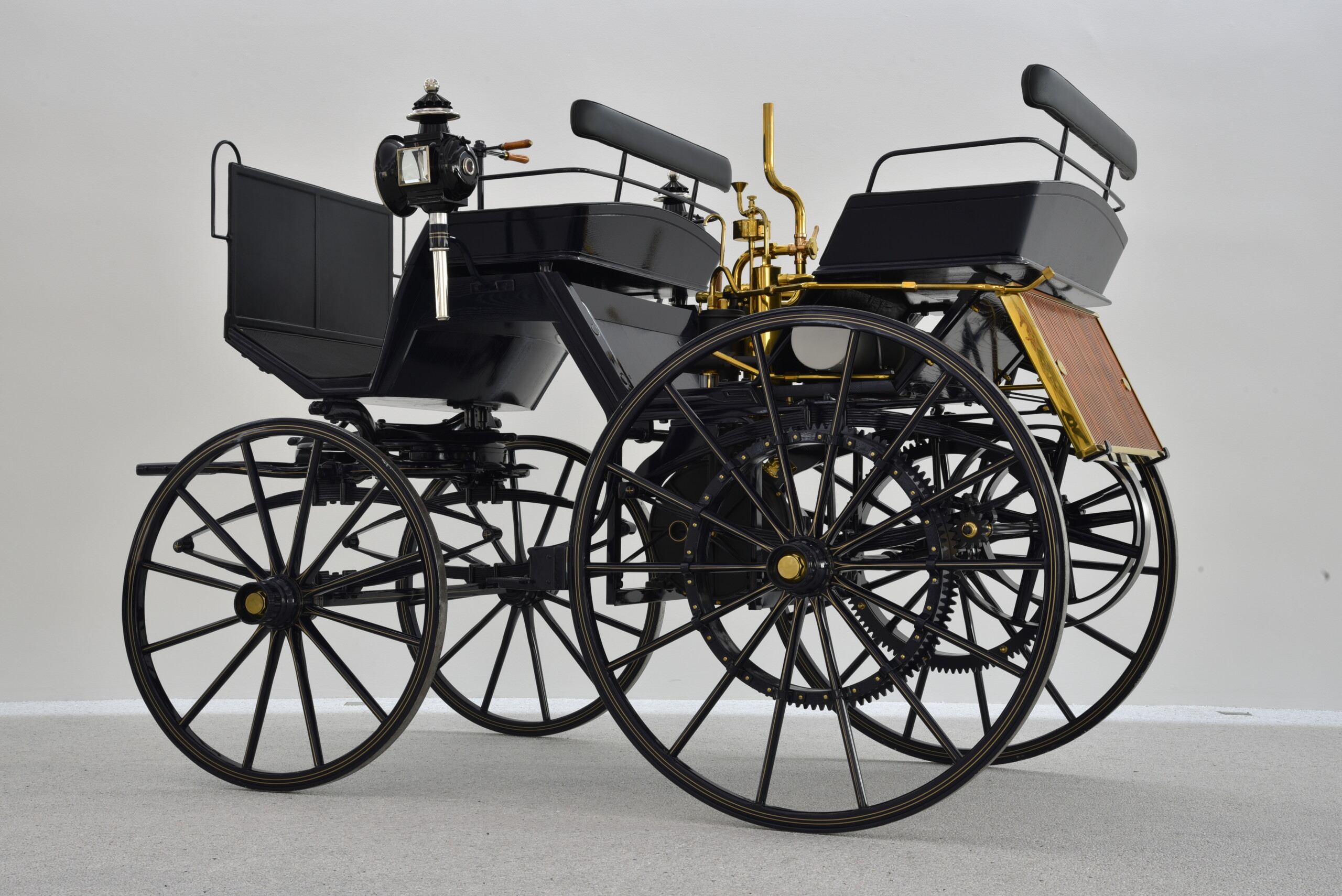
CAROLA DAIMLER
As the great-granddaughter of automotive pioneer Gottlieb Daimler, Carola Daimler was born with a fascination for automobiles. Over a long period of time she was referred to as a “blonde with petrol in her blood” throughout numerous press articles.
Born and raised in Heidelberg, Germany, Carola Daimler-Prangen decided to follow in her great-grandfather’s footsteps in 1984 after two semesters of art history and philosophy, by beginning her apprenticeship as an automobile saleswoman at the Mercedes-Benz branch in Reutlingen.
Following her training, which she not only completed successfully but also as the best in her class, she worked in sales at the Stuttgart branch for four years. She always regarded her work in the company as a “responsibility and obligation.”
During this time, Mrs. Daimler-Prangen was repeatedly asked for interviews by journalists and many customers as part of her sales activities. As a result, this increasingly led her to take on the role of the “Daimler diplomat” and act as brand ambassador for Mercedes-Benz.
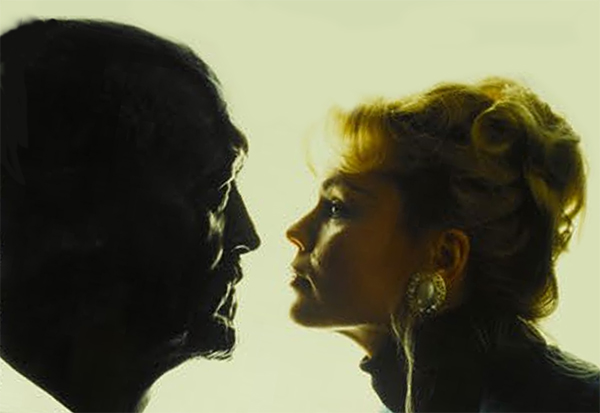
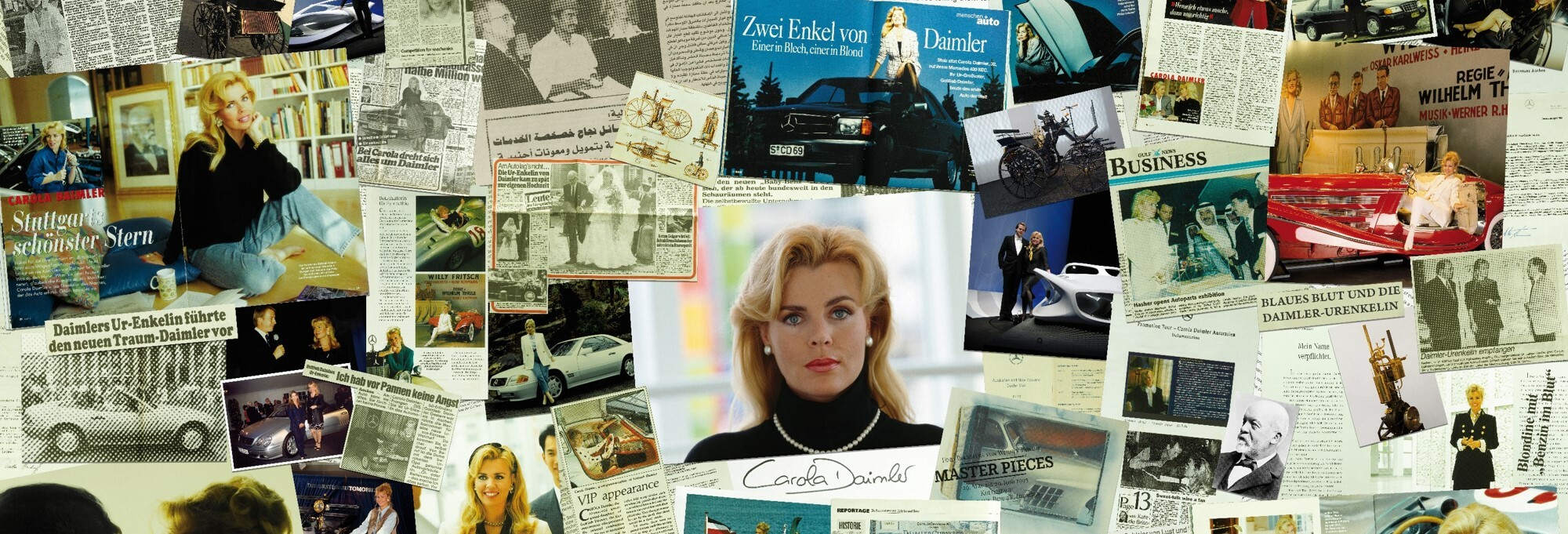
OUTLOOK
Significance, development, like-minded people, investment
The invention of the automobile revolutionized the world like hardly any other invention, and has had a significant impact on the German economy in particular. Based on this innovation, research and further development will continue and the high German standards in automotive engineering will be maintained.
The classic automobile will always accompany us and serve as an inspiring pioneer. This is one of many reasons why we must preserve, maintain and promote it as a cultural asset.
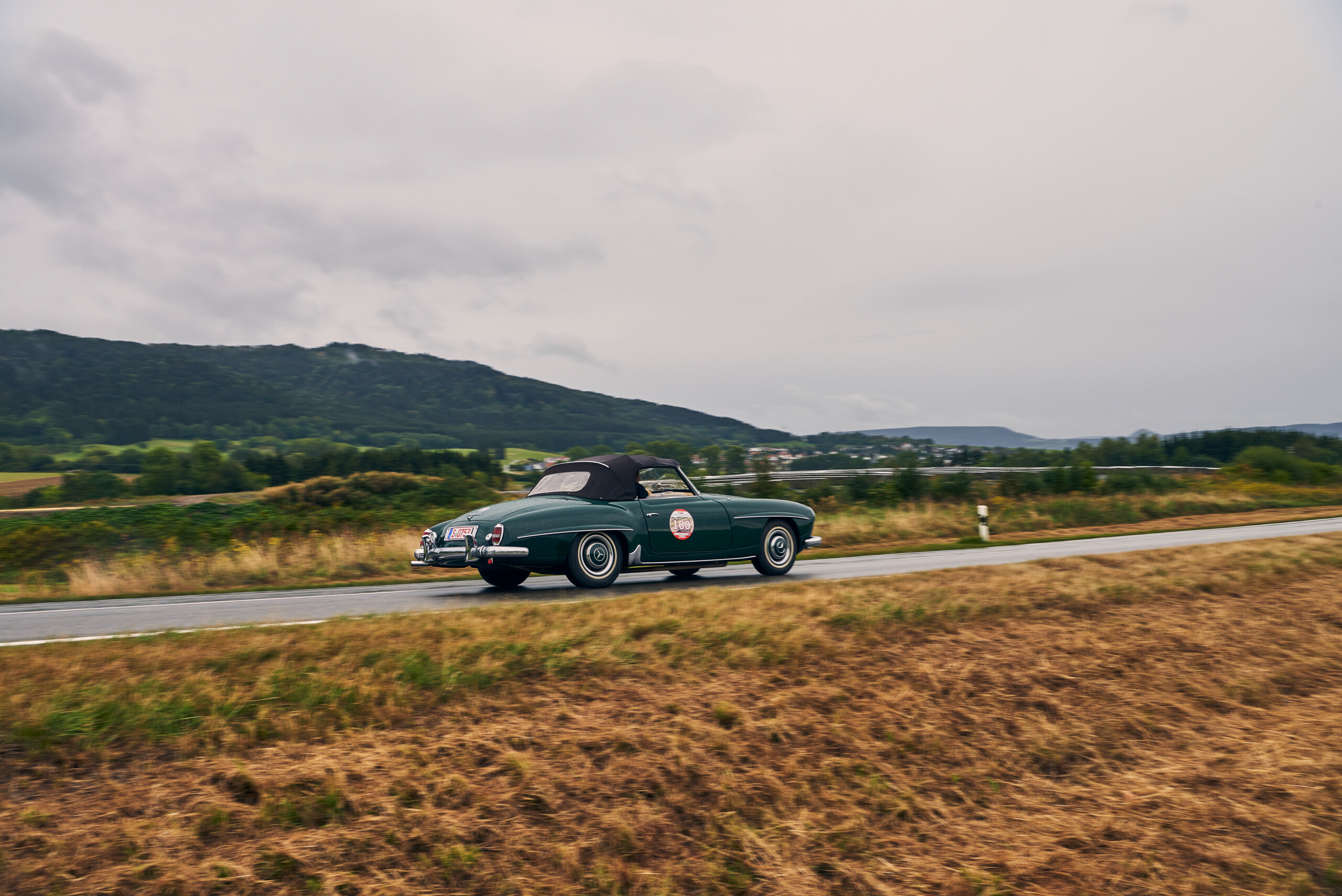
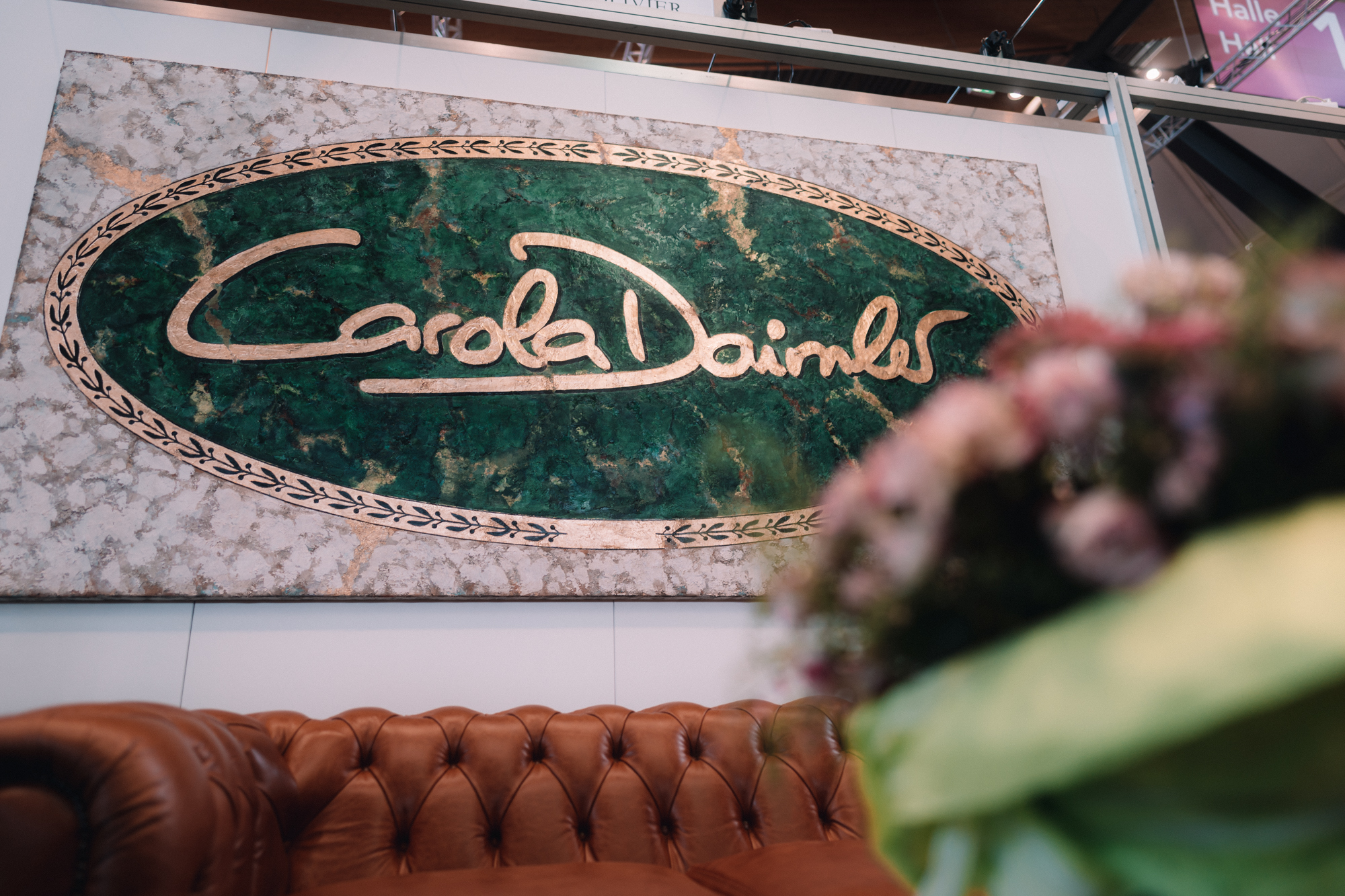
According to studies, over 70% of people react positively when seeing a classic car in day to day traffic. This is mainly due to nostalgia, the remarkable craftsmanship and, last but not least, the incomparable driving experience and charm that such a vehicle brings with it.
In the meantime, classic vehicles and collector's items have developed into reliable and stable investments. With the right know-how when buying or selling a vehicle, such a car isn’t just a jewel on four wheels, it’s also a stable form of investment.

